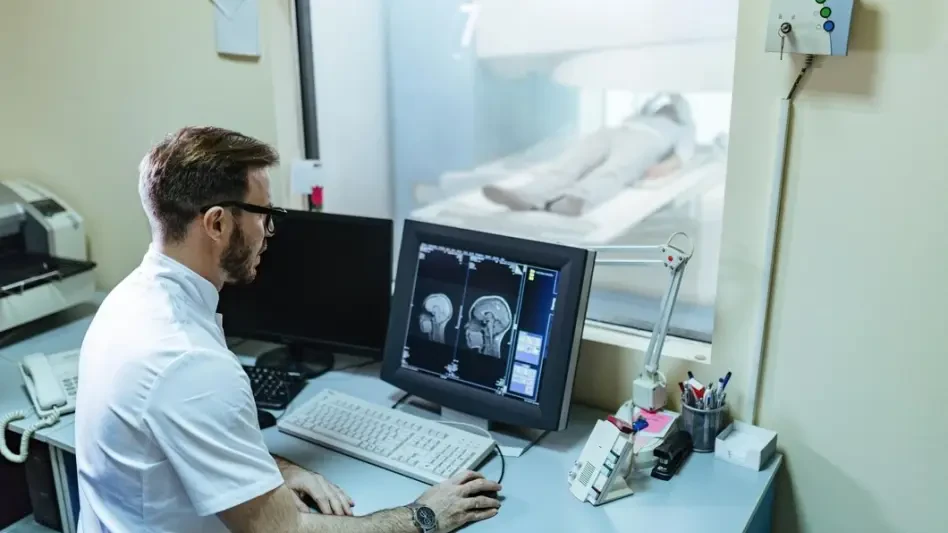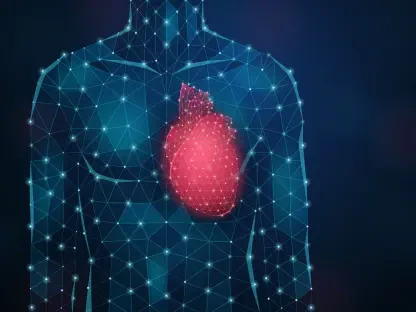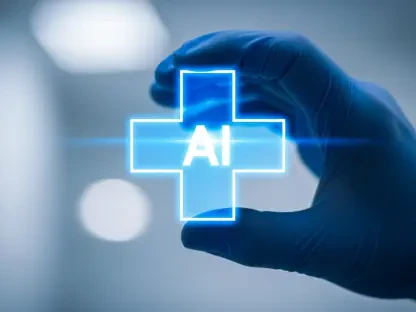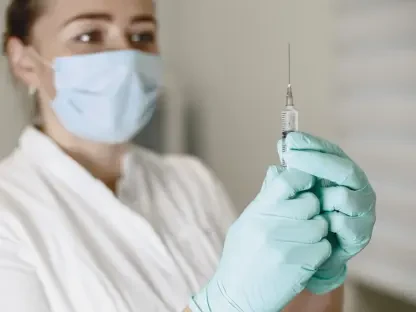Overview of the PET/CT Technology Landscape
The medical imaging industry stands at a pivotal moment, with positron emission tomography/computed tomography (PET/CT) technology playing a central role in transforming diagnostic capabilities. This hybrid imaging modality, which combines metabolic and anatomical insights, has become indispensable in healthcare, particularly for detecting and managing complex diseases like cancer. Its ability to pinpoint abnormalities at a molecular level offers clinicians a powerful tool for early diagnosis and treatment planning, significantly impacting patient outcomes across a spectrum of conditions.
Molecular imaging, with PET/CT at its forefront, holds particular importance in oncology and the emerging field of theranostics, where diagnostics and targeted therapies converge. The technology enables precise visualization of disease processes, guiding tailored interventions that improve survival rates. As global health challenges like cancer continue to escalate, the demand for such advanced imaging solutions is intensifying, pushing the industry toward innovation and broader clinical adoption.
Key market players, including GE HealthCare, a recognized global leader, are driving this evolution with cutting-edge systems and software. Alongside competitors, GE HealthCare has introduced advancements such as faster scan times and enhanced image resolution, shaping the competitive landscape. The scope of PET/CT applications now extends beyond oncology to neurology and cardiology, underscoring its versatility and profound impact on modern medicine. These developments highlight a dynamic field poised for further breakthroughs through strategic partnerships and technological progress.
Key Trends and Innovations in Molecular Imaging
Emerging Technologies and Clinical Demands
The PET/CT sector is witnessing rapid advancements, fueled by trends like total body imaging and ultra-low dose scanning techniques. Total body PET/CT systems, with their extended field of view, promise comprehensive multi-organ imaging in a single session, reducing scan times and enhancing diagnostic accuracy. Meanwhile, ultra-low dose capabilities address patient safety concerns by minimizing radiation exposure without compromising image quality, aligning with the broader push for safer medical practices.
Precision medicine and personalized care are also reshaping the landscape, as healthcare shifts toward individualized treatment plans based on detailed molecular data. Theranostics stands out as a groundbreaking approach, merging diagnostic imaging with targeted therapies to treat diseases like cancer more effectively. This integration allows clinicians to visualize disease sites and deliver precise interventions, marking a significant leap in patient-specific care.
Interdisciplinary collaborations are opening new research and clinical opportunities, fostering innovation in radiotracer development and imaging protocols. Partnerships between technology providers and academic medical centers are accelerating the translation of experimental techniques into practical applications. These collaborative efforts are critical for addressing unmet clinical needs and ensuring that emerging technologies meet real-world demands in diverse healthcare settings.
Market Insights and Future Projections
The global burden of cancer, with over 10 million new cases reported annually according to the World Health Organization, underscores the urgent need for advanced imaging solutions. PET/CT technology is increasingly vital for early detection and monitoring, directly influencing treatment success rates. As cancer incidence rises, the demand for molecular imaging tools is expected to grow, driving market expansion and technological investment over the coming years.
Projections indicate robust growth for the molecular imaging sector from 2025 to 2030, with innovations like total body PET/CT systems anticipated to capture significant market share. Industry analysts predict that advancements in scanner sensitivity and image processing will enhance diagnostic precision, positioning companies like GE HealthCare at the forefront of this expansion. Such developments are likely to streamline healthcare delivery, improving access to cutting-edge diagnostics in both developed and emerging markets.
Looking ahead, the integration of artificial intelligence and deep learning in imaging systems offers transformative potential for the next decade. These technologies can optimize image reconstruction, reduce scan times, and improve lesion detection, fundamentally altering clinical workflows. As these tools become more widespread, they are expected to redefine standards of care, making diagnostics faster, safer, and more accessible on a global scale.
Challenges in Advancing PET/CT Technology
Developing next-generation PET/CT systems presents significant technological hurdles, particularly in achieving high sensitivity while reducing radiation exposure. Engineers must balance image quality with patient safety, a complex task requiring innovative detector designs and advanced algorithms. These challenges are compounded by the need to ensure compatibility with existing clinical infrastructure, which often lags behind cutting-edge advancements.
Regulatory barriers further complicate the path to market, as technologies like GE HealthCare’s total body PET/CT remain in development and await clearance from bodies such as the U.S. Food and Drug Administration. Navigating these approval processes demands substantial time and resources, delaying the widespread adoption of potentially life-saving tools. Compliance with stringent standards is non-negotiable, yet it often slows the pace of innovation in a field where speed is critical.
Market-driven challenges, including high costs and limited accessibility, also hinder progress, especially in under-resourced regions. The expense of advanced imaging systems can restrict their deployment to well-funded institutions, exacerbating healthcare disparities. Potential solutions lie in optimizing imaging protocols to lower operational costs and forging partnerships that distribute financial burdens, ensuring broader access to these vital technologies through collaborative investment and policy support.
Regulatory and Compliance Landscape for Medical Imaging
The regulatory framework governing PET/CT technology is rigorous, with oversight from agencies like the U.S. Food and Drug Administration and European equivalents setting strict standards for safety and efficacy. These bodies mandate thorough testing to ensure that new systems meet clinical requirements, protecting patients from risks such as excessive radiation exposure. Compliance with these guidelines is essential for market entry and widespread clinical use.
Patient safety remains a cornerstone of regulatory focus, with an emphasis on minimizing radiation doses while maintaining diagnostic accuracy. Standards also address the accuracy of imaging results, ensuring reliable data for treatment decisions. As regulations evolve to incorporate emerging technologies like artificial intelligence, manufacturers must adapt to new compliance demands, balancing innovation with accountability in a highly scrutinized field.
Ethical considerations, including the secure handling of sensitive patient data, add another layer of complexity to the regulatory landscape. Protecting privacy during imaging processes is paramount, as is ensuring equitable access to advanced diagnostics. Changes in regulatory policies could either accelerate or impede the adoption of new PET/CT systems, depending on how they address these multifaceted issues, influencing the trajectory of industry growth.
Future Directions for PET/CT and Molecular Imaging
The evolution of PET/CT technology is poised to accelerate with the advent of total body imaging, which offers dynamic multi-organ scans in a single pass. This capability could revolutionize disease monitoring by providing a holistic view of physiological processes, enhancing the ability to track treatment responses over time. Such advancements are expected to redefine diagnostic protocols, particularly in complex fields like oncology.
Emerging disruptors, including novel radiotracers such as zirconium and copper isotopes, alongside deep learning tools like Precision DL, are set to further transform the sector. These innovations promise greater specificity in targeting disease markers and improved image processing for clearer results. As these technologies mature, they are likely to unlock new clinical applications, expanding the scope of molecular imaging beyond current limitations.
Consumer and clinical demands for faster, safer diagnostics will continue to drive innovation, pushing for systems that reduce wait times and enhance patient comfort. Initiatives like Thera4Care, aimed at broadening theranostic access, highlight a commitment to addressing global healthcare disparities through targeted solutions. External factors, such as economic conditions and sustained technological investment, will also shape the pace and direction of growth, determining how quickly these advancements reach widespread adoption.
Conclusion and Outlook for PET/CT Transformation
Reflecting on the strategic collaboration between GE HealthCare and Erasmus MC, it becomes evident that their partnership marks a significant milestone in advancing molecular imaging. Their shared vision to push the boundaries of PET/CT technology, particularly through total body imaging, offers a glimpse into a future where oncology and theranostics could achieve unprecedented precision. The practical benefits observed at Erasmus MC, such as reduced scan times with existing systems, underscore the tangible impact of this alliance on clinical efficiency.
Looking ahead, stakeholders should prioritize investment in collaborative research to accelerate the development and regulatory approval of next-generation systems. Focusing on patient-centered innovations, such as ultra-low dose imaging, is critical to addressing safety concerns while expanding access to underserved regions. Additionally, fostering global initiatives like Thera4Care could bridge healthcare gaps, ensuring that transformative diagnostics and therapies reach diverse populations. This partnership sets a precedent for how industry and academia can unite to redefine standards of care, paving the way for sustained progress in medical imaging.









